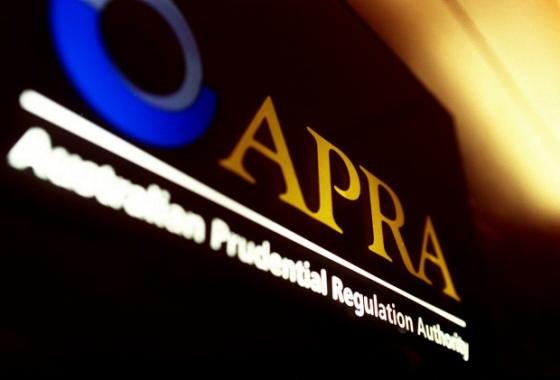Borrowing capacities have dramatically changed in recent years. Redom Syed outlines how different banks determine your borrowing capacity in 2017.

The purpose of this article is to outline how different banks determine your borrowing capacity in 2017.
How do lenders calculate your serviceability?
Lenders calculate your borrowing power by calculating your income and subtracting your assessed expenses. The left over monthly/yearly surplus is then used to extrapolate your borrowing power. This hasn’t changed.
Every lender calculator can also be broken down into individual parts. Lenders have changed how they calculate individual parts of their calculations, leading to big drops in borrowing capacity. For example, minimum living expenses are higher, assessment rates are higher, other income treatment is lower, etc.
Property investors seeking to understand borrowing capacities can ‘generalise’ lender calculators into three distinct categories:
The ‘APRA calculator’
Today, most banks have a lender calculator that mirrors the 2017 version of the APRA prudential practice guideline. This guideline is very prescriptive as it sets the rules for each component of the serviceability calculator. The individual parts of these calculators work like:
- 7-7.5% P&I repayment on all new & existing debt. Roughly, this means that the lenders double the actual repayment you will make to work out whether you can afford the new loan (based on $1mill debt and 4.5% actual interest rate). Higher effective assessment rates for interest only debt.
- 75-80% of rental income taken; 80% of other income taken (bonus/commissions); no negative gearing or negative gearing tied to actual interest rate; HEM living expenses.
Generous mainstream lenders
There are quite a few lenders out there that deviate slightly from the APRA prudential guideline. They usually diverge in one or two individual components of the APRA calculator and produce a better borrowing capacity result. For example, some of these calculators have one or more of the below characteristics:
- A 50-70% loading on actual repayments on any existing mortgage debt you hold.
- Negative gearing addbacks at assessment interest rate (7-7.5% P&I), instead of the actual interest rate you pay. This reduces the tax payable on your salary income, and therefore, increases the net income in serviceability calculations.
- 100% usage of rental income or non-consistent income sources such as overtime.
Aggressive calculators: non-banks
These calculators are still very much in the 2014 era. Typically, they aren’t deposit-taking institutions and therefore currently fall outside APRA’s prudential practice guideline (although APRA wants to change this). These lenders usually charge a premium for lending and usually involve greater finance risk, as your options to move elsewhere are very limited. They usually also have less flexible policies and products, and often have ‘price for risk’ models – for example, they usually don’t do construction loans, have stricter employment policies for their cheaper rates, drop rates by LVR bands, etc.
- Lower assessment rates.
- Small loading on OFI debt repayment or actual repayments on debt used.
- Higher negative gearing addbacks
- Lower minimum living expenses
Observations about borrowing capacities today:
Lenders' calculators produce increasingly similar results to those produced in the past. There is less divergence between lenders. Nonetheless, they still produce materially different results for property investors. Divergences get larger for property investors as they accumulate more debt. It is these divergences that offer scope to structure finance to build larger portfolios.
In my opinion, serviceability assessments won’t get any easier over time (we are still in a low rate environment). There is a far more prescriptive version of the APRA prudential practice guideline.
What are the results of these calculators?
To depict how these lender calculator work, we have run three basic scenarios to test how much someone can borrow for an owner occupier loan, on a principal and interest repayment over 30 years.
Expenses are the same across each scenario: minimal living expenses, 6k credit card, no other debts. The intention of each scenario is to show how lender calculators change for property investors specifically, and to demonstrate the differences between the three calculator segments we’ve raised above.
- GREEN: Combined income of $140k (70k each), no property investments.
- YELLOW: Combined income of $140k (70k each), $1mill existing property investment portfolio at an 80% LVR. $800k debt at 1.5% I/O repayments with a 5% rental yield.
- RED: Combined income of $140k (70k each), $2mill existing property investment portfolio at an 80% LVR. $1.6m debt at 4.5% I/O repayments with a 5% rental yield.
Borrowing capacities fall dramatically for APRA lenders as debt rises. For aggressive lenders, additional debt does not hurt borrowing capacity as much. It is these aggressive lenders that property investors can use to grow larger sized portfolios. Beware, there are risks of doing so and these need to be managed.
Borrowing capacities are also dramatically different between different major lenders. Some target property investors better than others. In this example, we show the ~$500,000 borrowing capacity difference for an investor with $2million in existing properties between major banks. While this gap has closed dramatically in recent years, there are still divergences between lender calculators. This offers scope for strategic and structured finance planning.
@minnowpond1 has voted on behalf of @minnowpond. If you would like to recieve upvotes from minnowpond on all your posts, simply FOLLOW @minnowpond. To be Resteemed to 4k+ followers and upvoted heavier send 0.25SBD to @minnowpond with your posts url as the memo
Downvoting a post can decrease pending rewards and make it less visible. Common reasons:
Submit